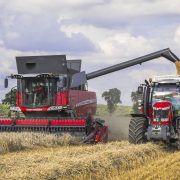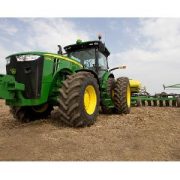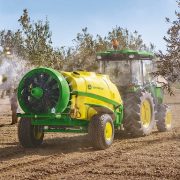Big news at FIERAGRICOLA 2022 with Antonio Carraro
Antonio Carraro S.p.A, a world leader in compact tractors for specialised agriculture, takes innovation to the next step, unveiling the first CONCEPT compact tractor with hybrid electric drive system at Fieragricola 2022.
The development of a new hybrid drive system for Antonio Carraro compact tractors is perfectly consistent with current energy-saving projects in the “Non Road Mobile Machinery” NRMM sector. The project sets the strategic objective of reducing harmful emissions as mandated by the PNRR Piano Nazionale di Ripresa e Resilienza (National Recovery and Resilience Plan) and by the Next Generation calls for proposal issued by the EU.
In recent years, the demand for efficient, high-performing non-road mobile machinery able to satisfy specific operating needs has led the scientific community and most industrial producers in this field to explore new design solutions. The choice of hybrid, or fully electrified drive systems is setting an example in the automotive sector regarding the environmental benefits that can be achieved in terms of reducing air pollutant emissions, in particular CO2. And that’s not all: vehicles fitted with electrical subsystems can offerimproved overall performance thanks to very precise power distribution control, leading to a general increase in the machine’s productivity as compared to equivalent models fitted with traditional drive systems.
For the engineers of the AC Research & Development department who worked in collaboration with Ecothea (start-up of the Polytechnic of Turin, specialised in the design and prototyping of electric vehicles for applications on agricultural machinery), the challenge was just as ambitious as it was exciting; the aim was to build a compact tractor with hybrid technology, based on the most complex model of the Antonio Carraro range.
An isodiametric tractor with reverse drive and articulated frame, keeping in mind the typical DNA of
compact tractors designed for specialised agriculture. Vehicles that necessarily had to be compact, agile and comfortable. The result didn’t disappoint: SRX Hybrid is a compact vehicle equipped with all comforts, which is captivating even to look at, but above all, “environmentally friendly”. A tractor with a 55kW combustion engine (3 cylinders; cc1861; fluid cooled; Common Rail Turbo Intercooler fuel injection system) combined with a 20kW electric motor, for a total of 75kW, equal to 102hp.
In short, SRX Hybrid (diesel/electric) has several objectives:
• Guarantee the performance level of so-defined conventional machines;
• Reduce pollution;
• Reduce fuel consumption and maintenance costs;
• Reduce noise emissions;
• Operate in full electric mode in closed environments (sheds, greenhouses, stables, etc.)
The architecture of the hybrid-electric system resulting from the collaboration between ANTONIO CARRARO S.p.A. and ECOTHEA, primarily makes it possible to exploit the available power of a diesel engine combined with an electric drive system, guaranteeing continuous traction when working with the PTO (with all equipment), during transportation (with trailer), and in material handling works (combining the vehicle with a forklift, loader or equipment for roadworks). This type of solution, also by virtue of the complexity due to the small spaces typical of a specialised tractor, places the project at the highest levels of innovation also with respect to hybrid architectures in the automotive sector.
A BRILLIANT, ECOLOGICAL, SILENT, COST-EFFICIENT MOTOR
The electric motorisation in subsequent versions will also be able to work in full electric mode, exploiting the lithium-ion battery charge. In this case, the diesel engine is off and the machine works with zero emissions, in absolute silence. Autonomy in full electric mode obviously depends on the capacity of the battery pack, which is recharged each time the brakes are actioned when working in descent, or in plug-in mode with recharging via an electric charging station, or else on request of the user thanks to the diesel engine. Considering an average work cycle, the CO2 reduction translates into fuel savings of more than 25%.














